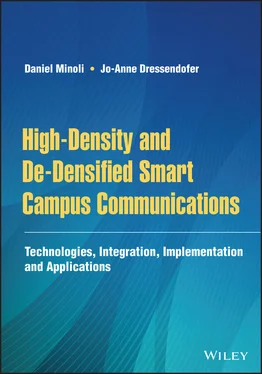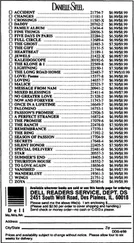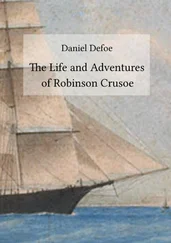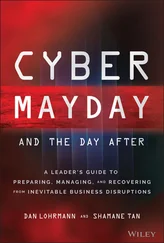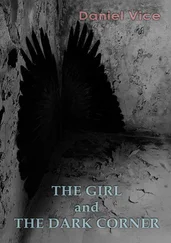Daniel Minoli - High-Density and De-Densified Smart Campus Communications
Здесь есть возможность читать онлайн «Daniel Minoli - High-Density and De-Densified Smart Campus Communications» — ознакомительный отрывок электронной книги совершенно бесплатно, а после прочтения отрывка купить полную версию. В некоторых случаях можно слушать аудио, скачать через торрент в формате fb2 и присутствует краткое содержание. Жанр: unrecognised, на английском языке. Описание произведения, (предисловие) а так же отзывы посетителей доступны на портале библиотеки ЛибКат.
- Название:High-Density and De-Densified Smart Campus Communications
- Автор:
- Жанр:
- Год:неизвестен
- ISBN:нет данных
- Рейтинг книги:3 / 5. Голосов: 1
-
Избранное:Добавить в избранное
- Отзывы:
-
Ваша оценка:
High-Density and De-Densified Smart Campus Communications: краткое содержание, описание и аннотация
Предлагаем к чтению аннотацию, описание, краткое содержание или предисловие (зависит от того, что написал сам автор книги «High-Density and De-Densified Smart Campus Communications»). Если вы не нашли необходимую информацию о книге — напишите в комментариях, мы постараемся отыскать её.
The book includes information about security requirements, large and boutique solution providers, applications, unbundled services, implementation planning and design, as well as operations and network management. An epilogue written by Josie Jo-Anne Dressendofer of Slice Wireless concludes the text. Readers will also benefit from the inclusion of:
A thorough introduction to background and functional requirements for high density communications, including requirements for airports, stadiums, convention centers, classrooms, train and subway stations, and smart cities An exploration of traditional voice and cellular technology, including DAS designs and architectures and microcellularization Practical discussions of traditional data and Wi-Fi, including throughput/interference and security A treatment of evolved hotspot connectivity, including Wi-Fi and 5G Perfect for telecommunication researchers and engineers, networking professionals, technology professionals, campus administrators, and equipment vendors,
will also earn a place in the libraries of senior undergraduate and graduate students in applied communications technologies.
